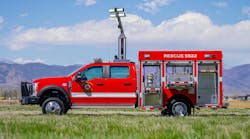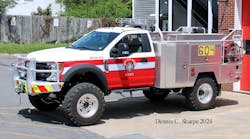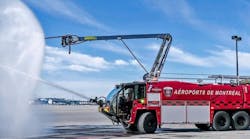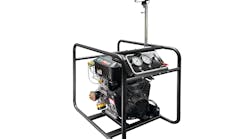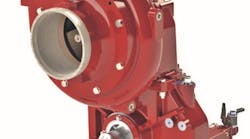Egg Harbor Township, in eastern Atlantic County, measures 63 square miles and is home to 25,000 residents. The Farmington fire company serves the northern area of the township, about five square miles. The first-alarm area for its firefighters is 90 percent commercial-industrial and includes shopping centers, high-rise hotels, motels, railroad tracks and major highways, including heavily traveled roads used by millions of people on their way to the casinos of Atlantic City by car or bus. Other hazards are posed by trucks carrying freight and hazardous materials through the area and by air traffic into and out of Atlantic City International Airport, on the outskirts of the first-alarm area.
In 1992, the firefighters saw the need for a single piece of apparatus to handle emergencies that usually require several pieces of equipment. Like many other volunteer departments, the company was experiencing a shortage of personnel during daytime hours, so company officers wanted one piece of apparatus that could handle vehicle extrications, fuel spills, motor vehicle fires and confined space emergencies, all of which account for about 60 percent of the company's runs (the rest include investigations, brushfires and an occasional "worker" in 1995, only two working fires were fought, both in single-family dwellings, both arson).
A committee was formed to look into acquiring such an apparatus. As the company already operates two Pierce pumpers, another Pierce was chosen. The committee did not want to spend a large sum of money on a chassis but wanted a custom four-door model. The Saber was chosen, based on a seating arrangement that seats six firefighters with turnouts donned and with seatbelts in use.
A top-mount pump control was chosen, not because it gives the pump operator a better view of the scene but because operators have had close calls while standing on highways at side-mount pump panels and being nearly struck by passing vehicles (roll-up compartment doors also were selected for this reason). This also takes into consideration a second safety feature if a live power wire drops onto the apparatus, the pump operator will not be in contact with the ground.
Lighting and confined space operations also were considered. A Will-Burt Nite Scan telescoping light mast was included and two telescoping quartz lights mounted on tripods were installed on the rear of the apparatus, eliminating the need for assembling lights and possibly losing parts. To accompany this, two 200-foot lengths of electrical cord were mounted on reels at the top of the cargo area. The confined space concern was tackled by mounting a one-ton front winch with poles that disassemble and store in the hosebed.
Other equipment includes a 50-gallon foam tank with an Akron eductor that can be used at 3 percent or 6 percent, low-pressure airbags with a four-ton limit, a high-pressure airbag, four lifting jacks, four hydraulic hose reels to work four separate rescue tools, a portable power unit for off-road rescues, an air reel to power the airbags or any of the numerous air-powered tools carried on the apparatus.
Dennis C. Sharpe is a construction/subcode official (fire) with the New Jersey Department of Community Affairs, Division of Housing & Development. He is a 20-year member of the Egg Harbor Township Fire Department and serves with Farmington Volunteer Fire Company 4 as safety officer. Sharpe is a State of New Jersey Level II certified training/safety officer and certified in hazmat operations and awareness. He is a member of the International Fire Photographers Association and second vice president of the Atlantic County Firefighters Association.


